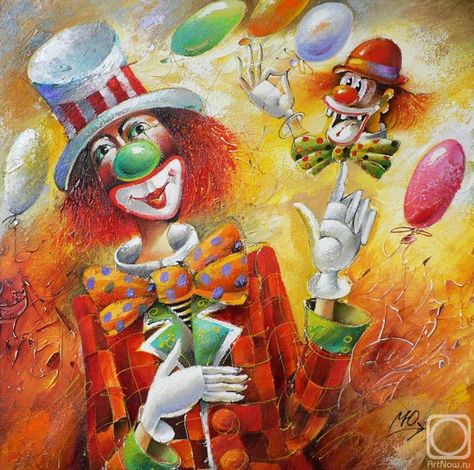
Clown therapy
Clown therapy is directed at adapting a personal self-image and behavior to a multicultural social environment. The clown therapist must deconstruct the client's reality so that the latter can get into the desired world outside the present.
The clown makes the world more positive by re-connecting people with themselves and their imagination, revealing opportunities, opening deposits of pure emotions, creating accents, playing with weaknesses and, through laughter, acknowledging the contradictory nature of human existence.
Both physically and theatrically, the clown performs social interaction through bodily interaction and various games. In doing so, he creates a paradox by playing with contrasts. Uncertainty growing out of this paradox may indicate that certainty is unreliable. The clown is on the verge of possibility. By creating a place for questions, the clown creates a sense of opportunity for change. He tries to confuse and brings chaos into the orderly world, helping to abandon a negative or distorted idea of one's body, of one’s image of the Truth, one's relationship with others, thus, making one's cherished dream come true. In fact, he questions everything that has been long conventional. The jester's desire to break rules creates an innovative, unconventional perception and thinking.
It is the clown who has the unique potential to heal and transform people and communities in different social contexts and environments. The clown enters the reality of exclusion and grants the power of growth through humor and laughter.
Jester
Jester is one of the 12 archetypes in Carol Pearson’s system.
Main desire: to live in the present, enjoying it to the maximum.
Aim: to have a wonderful time and have fun.
Fear: boredom or being bored
Strategy: to play, joke, be funny.
Traps: to waste life.
Reward: joy all over the world.
Most valuable qualities: inner freedom, the ability to see the world from an absolutely unexpected angle, the ability to enjoy the process and to dispel boredom.
Among other archetypes, Jester is most useful in dealing with absurd and carefree daily bureaucratic routine of today's world. He is such, partly because he treats everything very lightly, and partly because he likes breaking rules. The jester's archetype helps us live real life in the present and allows us to be impulsive and spontaneous. When this archetype is activated, people want to have fun. Their main desire is to be spontaneous, to regain the state of playfulness that was characteristic of their early childhood. Not afraid to "lose their face", they put themselves and others in a funny light, deliberately getting into laughable predicaments, pestering or provoking with a sharp word. Like other archetypes, it also has two faces, and you can see its white and black hypostases. The white one serves the man himself and society, the black one parasitizes on him, provoking giggles and empty anxiety. The main danger for people under the influence of Jester is to repeat themselves and live a life without substance and any destiny at all.
Here you can enter text or insert images or tables, if necessary.

